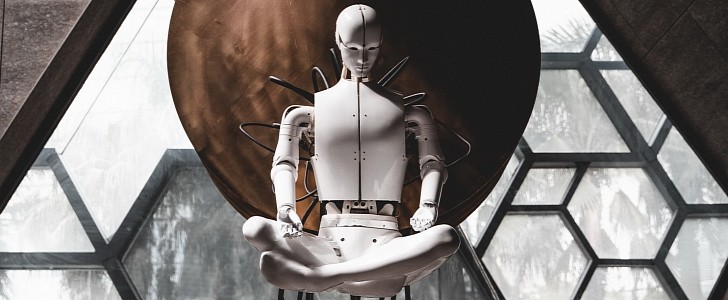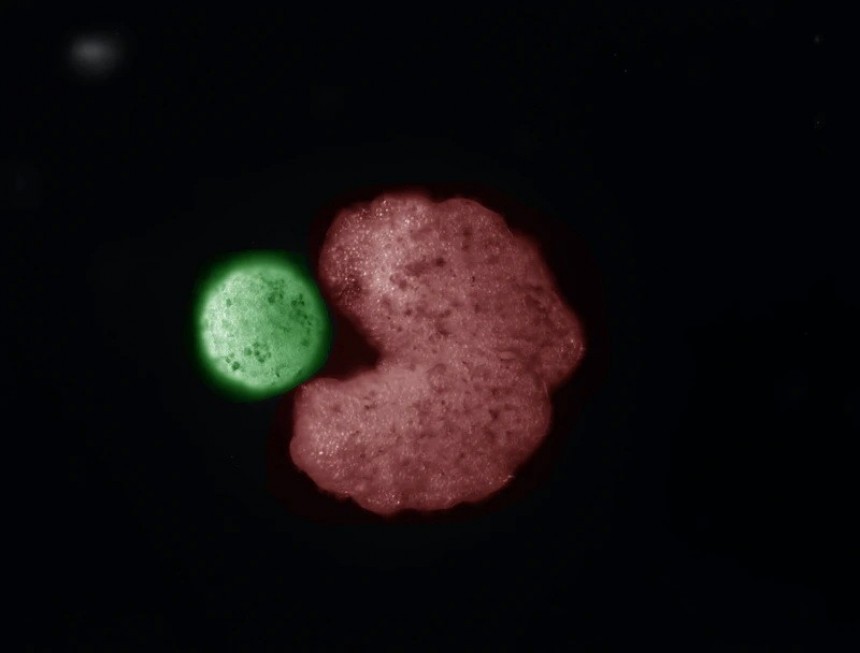I bet you thought we needed to look towards the stars in order to find some new form of biological mechanism. Or perhaps into the depths of our oceans, which run deeper than Jerry Jones’ pockets, or so I’ve been told. But no, living organisms called ‘Xenobots,’ created by scientists using artificial intelligence, already exist. Oh, and guess what? They have just figured out a brand spanking new method of biological self-replication.
Let’s start from the beginning, though. Back in 2020, scientists at the University of Vermont, Tufts University, and the Wyss Institute for Biologically Inspired Engineering at Harvard University created the world’s first living robots using stem cells from the African clawed frog, also known as Xenopus laevis, hence the name ‘Xenobot.’
These little Pac-Man-shaped buggers were designed using AI-powered software and eventually figured out how to move, work in groups and even heal themselves, which, as you can imagine, has massive regenerative implications for the field of medicine. Alas, that’s not the most fascinating thing about these bad boys.
That same team that created them has also just witnessed them swimming out into their tiny dish, grabbing hold of single cells, gathering hundreds of them together in their tiny mouths, and essentially assembling baby Xenobots, which after a few days come to "life" and begin repeating the process. Sort of like nanotech but not quite. Xenobots figured how to do this all by themselves, without having to be programmed.
“With the right design, they will spontaneously self-replicate,” explained Joshua Bongard, Ph.D, a computer scientist and robotics expert at the University of Vermont.
Usually, these embryonic cells would simply develop into the skin when inside a Xenopus laevis frog. However, when placed in this new environment, they can basically "reimagine their multicellularity," as phrased by Michael Levin, Ph.D., a professor of biology who worked with Bongard on this project.
“These are frog cells replicating in a way that is very different from how frogs do it. No animal or plant known to science replicates in this way,” added another member of the project, Sam Kriegman, Ph.D.
It’s amazing to think that just when we, as humans, thought that we’ve figured out every possible way to replicate, here come these cells with their collective intelligence, working together on this incredible new task.
In order to allow Xenobots to be more effective at this motion-based “kinematic” replication process, the team turned to an artificial intelligence program at the Deep Green supercomputer cluster at UVM’s Vermont Advanced Computing Core. The program then used an algorithm to test billions of body shapes (triangles, squares, pyramids, starfish) until finding the one that was best.
“We asked the supercomputer at UVM to figure out how to adjust the shape of the initial parents, and the AI came up with some strange designs after months of chugging away, including one that resembled Pac-Man,” added Kriegman. “It’s very non-intuitive. It looks very simple, but it’s not something a human engineer would come up with. Why one tiny mouth? Why not five?”
Awesome stuff, right? Well, if you’re stuck wondering how you should feel about tiny self-replicating Pac-Man characters being alive in a laboratory, the answer is probably excited, albeit just a tiny bit concerned. We need to tread very carefully when it comes to biotechnology, but if we manage to gain a deep understanding of it, it could lead to generational breakthroughs, the type you only hear about in sci-fi movies – hopefully without any apocalyptic results.
It will, of course, take several more decades (probably even more) until such technology can be expertly manipulated for the greater good. While rare, breakthroughs can happen at any given moment. However, finding ways to apply everything you've learned and have it ready for public "consumption" is a whole different story.
These little Pac-Man-shaped buggers were designed using AI-powered software and eventually figured out how to move, work in groups and even heal themselves, which, as you can imagine, has massive regenerative implications for the field of medicine. Alas, that’s not the most fascinating thing about these bad boys.
That same team that created them has also just witnessed them swimming out into their tiny dish, grabbing hold of single cells, gathering hundreds of them together in their tiny mouths, and essentially assembling baby Xenobots, which after a few days come to "life" and begin repeating the process. Sort of like nanotech but not quite. Xenobots figured how to do this all by themselves, without having to be programmed.
“With the right design, they will spontaneously self-replicate,” explained Joshua Bongard, Ph.D, a computer scientist and robotics expert at the University of Vermont.
“These are frog cells replicating in a way that is very different from how frogs do it. No animal or plant known to science replicates in this way,” added another member of the project, Sam Kriegman, Ph.D.
It’s amazing to think that just when we, as humans, thought that we’ve figured out every possible way to replicate, here come these cells with their collective intelligence, working together on this incredible new task.
In order to allow Xenobots to be more effective at this motion-based “kinematic” replication process, the team turned to an artificial intelligence program at the Deep Green supercomputer cluster at UVM’s Vermont Advanced Computing Core. The program then used an algorithm to test billions of body shapes (triangles, squares, pyramids, starfish) until finding the one that was best.
Awesome stuff, right? Well, if you’re stuck wondering how you should feel about tiny self-replicating Pac-Man characters being alive in a laboratory, the answer is probably excited, albeit just a tiny bit concerned. We need to tread very carefully when it comes to biotechnology, but if we manage to gain a deep understanding of it, it could lead to generational breakthroughs, the type you only hear about in sci-fi movies – hopefully without any apocalyptic results.
It will, of course, take several more decades (probably even more) until such technology can be expertly manipulated for the greater good. While rare, breakthroughs can happen at any given moment. However, finding ways to apply everything you've learned and have it ready for public "consumption" is a whole different story.








